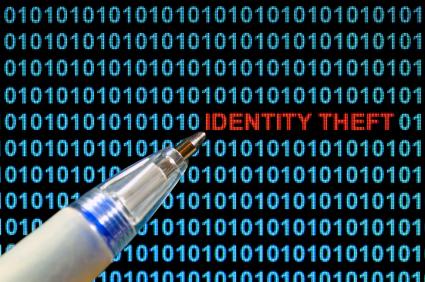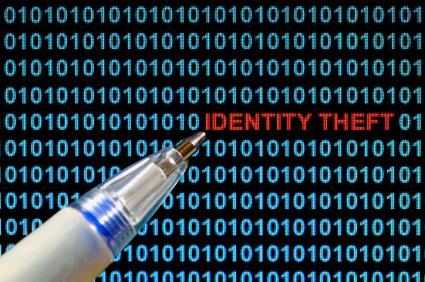 Whether it’s a quick run on a credit or debit card, a lost wallet or a full-scale identity theft, responding to such a crime requires a rapid response.
Whether it’s a quick run on a credit or debit card, a lost wallet or a full-scale identity theft, responding to such a crime requires a rapid response.
Although an online world makes it easier to become a victim of identity theft, it also provides tools that can be used to stop the thieves and limit the damage.
Step one—A fraud alert
After closing any affected accounts, such as a credit card, the first thing a victim of identity theft should do is to contact one of the three credit reporting companies and put a fraud alert on their file.
A fraud alert means that before a company extends any new credit to an individual the company must make a good-faith effort to verify that it’s a legitimate request. There’s no need to contact all three credit companies, as one of them will notify the others.
The nation’s three credit reporting companies are Equifax: 800-525-6285; Experian: 888-397-3742 and TransUnion: 800-680-7289.
The initial fraud alert will last for 90 days but can be renewed. Anyone who has created an identity theft report can get an extended fraud alert that will last for seven years. It can be initiated by contacting each of the three credit reporting companies individually and filling out a request form.
An extended alert allows victims to get to free credit reports per year from each of the three credit reporting companies. These companies must also remove a victim from any marketing lists for prescreened credit offers for five years.
An alert is different from a credit freeze. To initiate a credit freeze someone would have to contact each of the three credit reporting companies individually.
Placing a credit freeze means access to someone’s credit is locked and no one can access it unless it’s unfrozen by the individual. If someone with a credit freeze wanted to allow a creditor or an employer to view their credit report, they would have to either temporarily or permanently unfreeze their credit.
Each time this is done it comes with a small fee that varies from state to state, although many of them don’t have fees for victims of identity theft.
Lisa Schifferle, attorney with the Bureau of Consumer Protection at the Federal Trade Commission, says credit freezes are generally not recommended for average citizens who haven’t been victims of identity theft.
Those who have been victimized might consider putting a freeze on their credit if they’re in the process of applying for a loan as it would stymie the process.
“If you found out about your identity theft because you’re applying for a mortgage and then found out in getting your credit report that someone had stolen your identity you might not want to put a credit freeze on it because then you’re going to have to lift it yourself when you’re trying to get credit, but you could put a fraud alert on it,” Schifferle says.
For non-victims a credit freeze might sound like a good measure of protection, but each time they wanted to freeze or unfreeze their credit they’d have to pay a fee to each credit reporting agency which would add up over time.
Among non-victims a credit freeze might make sense for someone like a senior citizen, Schifferle says, as it’s unlikely they would be taking out any new credit.
A lot of states don’t have fees for a credit freeze if you’re a ID theft victim, otherwise they do. Usually five or $10 for each time you lift or place the freeze on and for each credit reporting agency. They aren’t huge fees but they can add up.
Step two—contact the companies
Any companies where fraud might have occurred should be notified. If a thief used someone’s credit card at a particular store, both the credit card and the store itself should be informed of this.
Check with banking and other accounts to make sure they haven’t been tapped and put a hold on them if necessary.
Step three— file a police report
Schifferle says there are many rights for identity theft victims, contained within the Fair Credit Reporting Act, that depend on having a police report. It’s part of the document trail needed in taking back a stolen identity.
Step four—the FTC
Filing a complaint with the FTC can be done at the identity theft section of its website or by calling its ID theft hotline: 877-ID-THEFT (877-438-4338). After filling out such a complaint, victims can print it out and use it to help reclaim their identity.
“The police report, plus the identity theft affidavit combined are considered your identity theft report which you need to exercise certain rights under the Fair Credit Reporting Act to clean up your credit,” Schifferle says.
Step five—cleaning up
Both a police report and the FTC affidavit should be sent to the credit reporting companies to begin the process of clearing up credit and reclaiming a stolen identity.
Katherine Hutt, national spokesperson for the Better Business Bureau, says victims of identity theft should closely monitor all of their accounts and should also go through the extra step of trying to figure out how the fraud occurred, such as running a thorough scan of all computers to check for viruses or spyware.
“Sometimes our identity is stolen because of our own carelessness and other times it’s very much criminal behavior and we’re just purely victims, but for those times when it’s our own carelessness, those of the ones that we really would like to stop.” Hutt says. “People just need to be a little more careful with their information. Understand that once you enter something on a website or give somebody that information it’s out of your hands so be very cautious about who you do business with, who you share your information with and keep your data as secure as possible.”
The FTC recommends extensive record keeping during this whole process:
• Keep track of all calls and letters.
• Create a log of all telephone calls.
• Record the date of each call and the names and phone numbers of each person contacted.
• Prepare questions before calling and write down the answers.
• Send letters by certified mail with a return receipt.
• Create a filing system.
• Keep all original documents.
• Maintain a timeline of important dates such as when a request must be filed, when a company must respond and when a follow-up will be necessary.
• Check a credit report for any errors. Raise any issues with the credit reporting companies and the fraud department of each business that reported an error.
• Ask for copies of all documents a thief used in stealing credit.
• Ask credit-reporting companies to block disputed information from appearing on a credit report.
Also see our story “How to avoid identity theft.”












